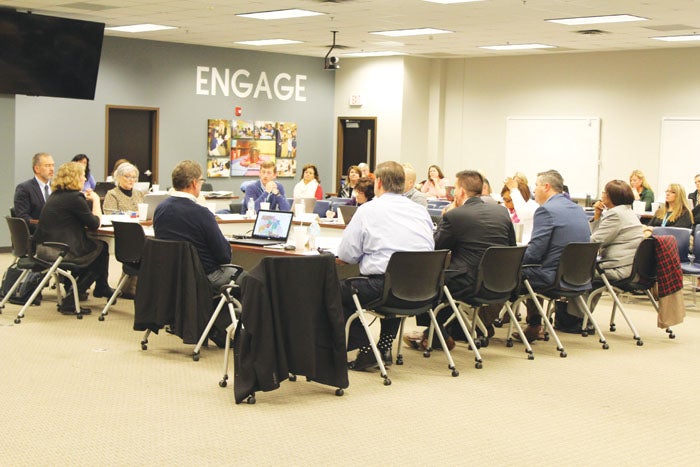School board begins long look at redistricting
Published 12:01 am Friday, January 25, 2019

- The school board gathers on Wednesday to discuss community concerns about consolidation. Andie Foley
SALISBURY — Since November, the Rowan-Salisbury Board of Education has faced ire and scrutiny as parents and other residents became familiar with a tentative plan for school consolidation.
Points of contention centered around the possible closure of more than 10 schools, with affected communities voicing the most displeasure.
But a bigger battle would come with consolidation, said board member Travis Allen during a daylong retreat on Wednesday.
“If you think closing individual schools is going to be hard, you wait until you redistrict,” Allen said.
The greater portion of this week’s retreat was dedicated to an exploration of just that. Members of the board were presented with a number of potential redistricting plans to address a continued trend of underutilized buildings systemwide.
“We are not going to make people happy,” said Allen. “The redistricting fight will be much larger than closing any individual school because you’re affecting not just one community, you’re affecting the entire county.”
Redistricting scenarios were prepared by consultant Mike Miller of Numerix LLC and were meant to be “exploratory.”
“They are meant to answer high-level questions about what you can expect from a reassignment plan,” said Miller, “and, maybe more importantly, what a reassignment plan can’t do for you.”
The plans were prepared using 2017 geographical data, reflecting trends such as an average decrease of 169 students annually in the school system since 2012.
There had also been no rise in live births in the county, and that reflects a nationwide trend, Miller said. The stagnation has resulted in a significant loss in elementary enrollment, which Miller said will work its way through the school system in coming years unless the population sees a “significant shift.”
Each prepared plan looked at where students live, the location of the school, its capacity and a proposed utilization allowance — how full did the board want the schools to be?
Most illuminating for both board and school staff was a scenario that looked at proximity only, assigning students to the nearest school without limitations on utilization.
Such a scenario put seven elementary schools well over their maximum capacities — from Isenberg Elementary, with 106 percent utilization, to Overton, with 210 percent.
On the opposite side of the spectrum, five K-5 schools could see less than 50 percent of their capacities in use — Granite Quarry Elementary, with just 46 percent, to Shive Elementary, with 32 percent.
“So just looking at utilization of elementary schools, Overton should be twice as big as it is, and we probably should have never built Shive,” said Superintendent Lynn Moody.
The problem didn’t improve when plans were adjusted to meet building capacity. Redistricting plans were formulated to ensure neighborhoods and blocks were not divided, a process that Moody compared to moving Lego blocks. One move could shift as many as 50 students at once.
With a 100 percent utilization goal, six elementary schools schools remained over capacity and four saw less than 50 percent use.
Closing schools identified as underutilized or those with high capital needs appeared to exacerbate the problem. Miller’s plans included scenarios in which schools identified for closure in the first phase of consolidation were no more.
With the possibility of no Faith, Granite Quarry, Koontz, Overton or Rockwell elementary schools, and with students assigned to the closest site, schools could see capacity numbers ranging from 27 percent to 224 percent.
“This plan shows that you can’t close five schools and not do something,” said Moody.
In the end, Miller’s plans would help the board identify a more equitable distribution of students across all facilities. Some proposed decisions in the consolidation plan would also need to be pushed back until redistricting had been implemented, such as the closure of North Rowan High School.
The board tasked Miller with preparing additional scenarios with an 80 percent utilization cap and with balanced student enrollment at the high school level.
Similar evaluations will be prepared for other grades, with elementary plans to consider the possible closure of Faith, Koontz and Overton. The plans will be considered in at the board’s Feb. 25 business meeting.


